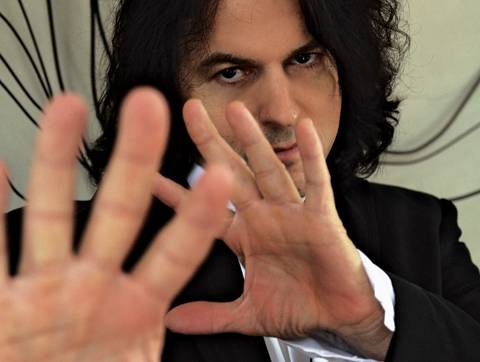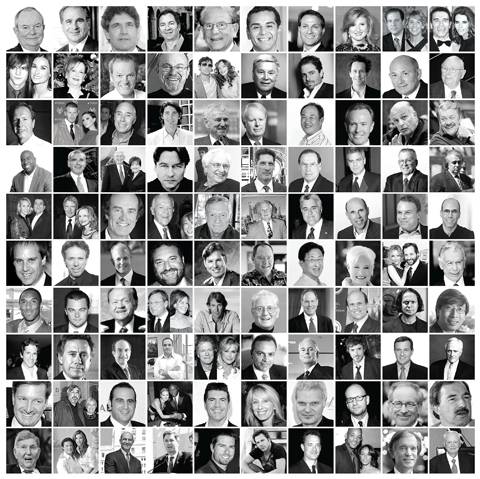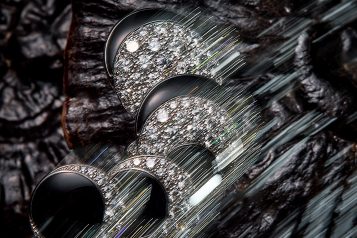The allure of a Lange is that it’s exclusive and made traditionally.
The art of watchmaking, when performed by a worthy craftsman, is a time-honored, complicated tradition that results not only in a functioning timepiece, but an intricate wonder that perplexes even the staunchest watch collectors. In the most complicated timepieces, hundreds, if not thousands, of miniscule parts-some barely visible to the eye-all work together in a way that goes far beyond accurately telling the hours and minutes. Seeing a watchmaker diligently practice his trade is the ultimate enjoyment for a watch connoisseur, but just as is the case with the finest cars, fashions, and cuisine, the best watchmaking houses are firmly planted across the pond.
Although firmly may not be the best choice of words. A. Lange & Söhne, the dynasty responsible for some of horology’s most coveted pieces-both historical and modern-uprooted their finest craftsmen and traveled nearly 6,000 miles to showcase their unmatched talents for Angelenos. This special “House of A. Lange & Söhne” event, which took place at the end of October in the private residence of a famous fashion designer, celebrated what the company refers to as the Saxon Art of Watchmaking. The firm’s American president, Marcia Mazzocchi, and CEO, Fabian Krone, hosted the four-day gathering.
The centerpiece of the event was the manufactory itself; guests were able to follow the creation of a Lange watch close-up, literally looking over the shoulders of the craftsmen as they worked. Guests, which included authorized retailers, customers, and, of course, journalists, were able to try their skills as watchmakers and engravers under the instruction of the Lange experts. While similar events have taken place in Singapore and Tokyo, this marked the House’s first foray in the United States.
Mazzocchi was instrumental in bringing this year’s event to the U.S. While the company’s history dates back to the early 1800s, it wasn’t until recently that it debuted stateside. Mazzocchi felt that the hills near Hollywood were the ideal location for this exclusive gathering. “We chose Los Angeles because it is a beautiful city,” says Mazzocchi. “People here have a lot of knowledge about luxury and about watches.”
The company’s dramatic 160-year history has seen its share of highs and lows. After a soaring start thanks to a focus on fine pocket watches, the company ultimately was crushed after surviving the First World War. On the last day of WWII in 1945, Russian bombers razed the main production workshops in Glashütte, near Dresden, Germany. Three years later, the company was seized by the communist regime and expropriated.
When Germany was reunited in 1990, Walter Lange, the great-grandson of company founder Adolph Lange, returned to Glashütte and reregistered the A. Lange & Söhne brand. The first watches of the new era debuted in 1994, but Mazzocchi explains that at the time Swiss watchmakers were the most highly regarded in the field. “People were very skeptical of the German industry,” she says.
But with the release of the first four watches of this new generation-The Lange 1, the Tourbillion Pour le Mérite, the Arkade, and the Saxonia-the house won over even the most adamant critics. “The Lange 1 took everyone’s breath away,” says Mazzocchi. “It’s asymmetrical, with the hours and the seconds off-synch.” This timepiece has since become Lange’s flagship; it epitomizes the company’s horologic artistry. The outsize date is highly visible, while the solid-silver dial, with an off-center display, indicates the hours, minutes, and seconds. As for the movements, the watchmakers would not accept anything less than a level of perfection that would lead to market domination-not necessarily in terms of numbers but in prestige. The Lange 1’s three-quarter plate made of untreated German silver is decorated with Glashütte ribbing, and edges in the movement are chamfered and polished. Even the surfaces that ordinarily remain concealed to the eye of the beholder are meticulously finished.
The watch elevated the house to the upper echelon of the industry. Since then, the company has been cultivating new high-tech standards. The allure of a Lange is that it’s exclusive and made traditionally. Unlike those brands that focus on being fashion forward, a Lange watch is, in German tradition, one of understated elegance. Its design and construction are subdued, yet entirely distinguishable. “On the street, it is immediately recognizable as a Lange to another connoisseur,” Mazzocchi marvels.
And, like the style, the components are entirely German. “Even the metals are German,” says Mazzocchi. “We use German silver just as in the old days-an alloy of zinc, nickel, and copper.” The key components of all Lange movements are designed, produced, and finished at the Glashütte manufactory. A movement first sees the light of day in the studio of the prototype builders. They craft each new part by hand, a process that takes a great deal of time. After initial assembly, the entire movement is dismantled piece by piece. This cautionary step, unique to Lange, is taken because when the parts are calibrated and adjusted for the first time, microscopic particles can enter the movement, which are then removed before the final assembly.
The attention to detail is the basis of the house’s entire line of exquisite timepieces. Mazzocchi sites the Perpetual, Lange 1, and Datograph as her personal favorites, and at the event, she donned the Datograph, the world’s first chronograph based on the classic column-wheel principle with flyback, precisely jumping minute counter, and patented outsize date. She enjoys the watch not only for its functionality, but also for its bold style. “Women can wear big watches; they are no longer restricted,” she declares.
CEO Krone also sported a Datagraph at the event, although his is the Perpetual version. He tends to anthropomorphize the watches, thinking of them as people with distinct personalities. “It takes so much effort, more than nine months, for this ‘child’ watch to be born,” he explains. “Before that, it takes four or five years to develop. You never know if this child will be able to survive, so while I love all the watches, the newest, smallest child needs the most attention.” So right now, despite the Datagraph Perpetual on his wrist, all of his attention is on the Cabaret Tourbillion.
This new timepiece debuted in Geneva in spring 2008, and it represents a breakthrough in the more than 200-year history of the tourbillion-it’s the first that can be set precisely to the second. This stunning achievement is thanks to a V-shaped arresting spring that allows the tourbillion to be stopped, a previously unaccomplished feat.
The Cabaret Tourbillion, alongside the entire current line, was on display at the House of A. Lange & Söhne, as well as a selection of long-out-of-stock and limited-edition timepieces that are the prized rarities of many auctions. Guests were also treated to an exhibition of a private collection of historic pocket watches and dinner with Clint Eastwood and producer Albert S. Ruddy. The event closed with a private dinner with Adrien Brody, who wore his Datograph Perpetual for the occasion.
The House of Lange gave patrons just a glimpse of the wonders that originate at the company’s Glashütte home. It helped propel Mazzocchi one step closer to her goal of making A. Lange & Söhne the timepiece of choice for America’s elite.





















